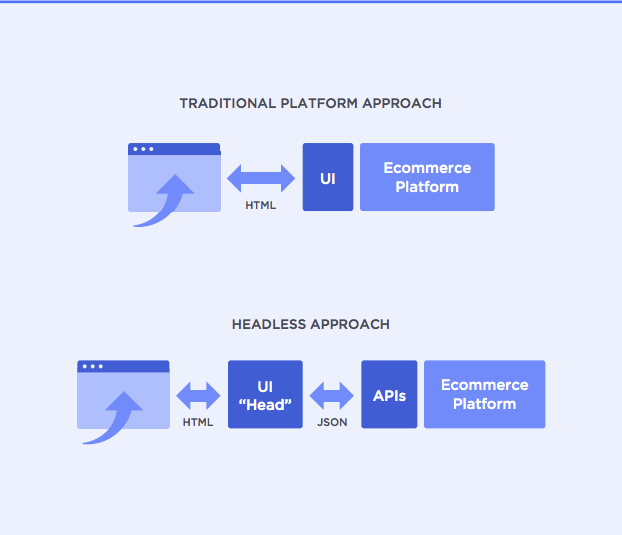Press Release - Ecommerce Microservices and Headless
Why Distributed Systems Are the Present and Future of Online Retail
(Excerpt/Repost): https://www.bigcommerce.com/articles/ecommerce-website-development/microservices/
Twenty years ago, monolithic systems were essentially the only choice for eCommerce websites. These all-in-one platforms provided a one-size-fits-all solution on which to launch a website. Increasing competition and rising customer expectations mean brands need to be fast and flexible.
However, today’s eCommerce brands need more than a one-size-fits-all approach. That’s why many eCommerce businesses are turning to another way of structuring their tech stacks: microservices (and many MACH Alliance approved solutions). Businesses are realizing more than ever that they need to change their strategies to keep up with their customers’ expectations.

Microservices can enable eCommerce businesses to adapt quickly and stay on the cutting edge of market demands. Read on to learn more about microservices, what they are, how they’re different from monolith models, how they’re related to headless commerce and more.
What are Microservices?
Microservices, or microservices architecture, is a method of developing software systems in which different single-function applications are coupled together. Microservices get their name because each application operates as a small independent service. The advantage of this type of structuring is that each service can be scaled independently of each other without disrupting the others. Because it is a distributed system, a microservices framework is highly scalable and can avoid the bottlenecks of a monolithic architecture (one in which all the components are unified in a single main system).
Traditional Digital Commerce
Until relatively recently, most eCommerce platforms were supported by monolith architectures (Adobe Commerce/Magento, Salesforce Commerce - even Shopify at the begining of their journey). These are the original self-sufficient, self-hosted, jack-of-all-trades systems. They provide businesses a centralized, on-premise, feature-rich system to meet their needs. However, as a business gets more complex, these systems can often be slow and difficult to scale.
Microservice architecture offers a decentralized, decoupled approach. Instead of one solution that does everything, it separates different business requirements into different services which then communicate with each other.
This means even as the business and its needs grow more complex, microservices can offer speed and flexibility. The result is an agile platform that can encapsulate all the business requirements but also quickly innovate with changing market demands.
Headless Commerce
One version of a microservices approach is headless commerce. Headless commerce entails decoupling the front-end presentation layer from the back-end eCommerce engine. Customer expectations are rising. They want fast shipping options and unique personalized experiences.Headless and microservices can help address these expectations.

As Adam Grohs, the founder of the digital innovation agency Particular. and co-founder of agnoStack, writes: “The next generation of commerce platforms will whole-heartedly embrace microservices, headless and event-driven architecture as eCommerce for brands is no longer about a destination. Monetizable events and experiences will be more of the norm than an eCommerce website as a destination.”
Headless enables enterprises to be nimble and to innovate because they can make changes to their front-end faster without compromising essential eCommerce components like their checkout and security.
For more about headless commerce and the reasons brands are embracing it, check out this in depth article from BigCommerce.
Microservices, headless and distributed models are not the only solution, but for many businesses they can provide the extra flexibility they need to be successful.
Modular approaches through microservices architecture reflect the larger — and growing — need to create a powerful and changeable customer experience across channels. Consider your business needs and if having a headless or microservices model might better help you achieve your goals.